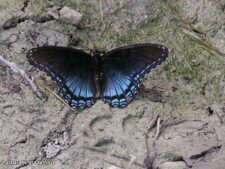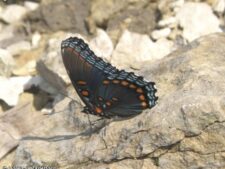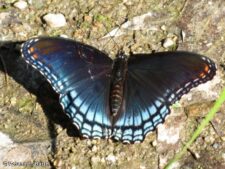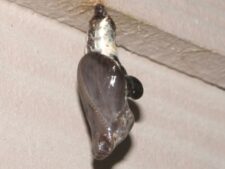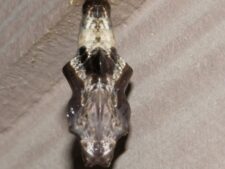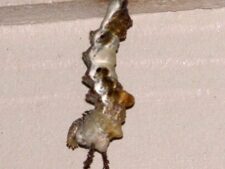
The wing-span of this butterfly is 3 – 3 3/8 inches. Dorsally, it is blackish with a brilliant blue iridescence. The forewing has 4 small, orange submarginal spots which tend to fade with age. Ventrally, both wings have 2 rows of pale blue broken lines around the margin and orange and pale spots around the bases of the wings. In addition, there is a row of square, orange submarginal spots on the hindwing. The hindwing has a squarish shape. The mature caterpillar is approximately 1 1/2 inches long and is a bird-dropping mimic. The foreparts are humped and the body has a lumpy looking appearance. It has a brown and cream-colored blotchy coloration, and 2 bristly “antlers” behind the head. The Viceroy caterpillar is very similar, but the antlers are slightly less clubbed.
This is a common butterfly in midsummer. It especially likes to mineralize from damp soil and can be numerous along Gifford Road after a rain.
The Red-spotted Purple mimics the poisonous blue Pipevine Swallowtail (without the tails) thereby giving it protection from birds. The Admiral caterpillars which include Red-spotted purple and Viceroy (subfamily Limenitinae) are readily recognized as they are the only horned bird-dropping mimics. Larval hostplants include cherry, oak and poplar.
Disclaimer: The content of NatureSearch is provided by dedicated volunteer Naturalists of Fontenelle Forest who strive to provide the most accurate information available. Contributors of the images retain their copyrights. The point of contact for this page is: Babs Padelford.

